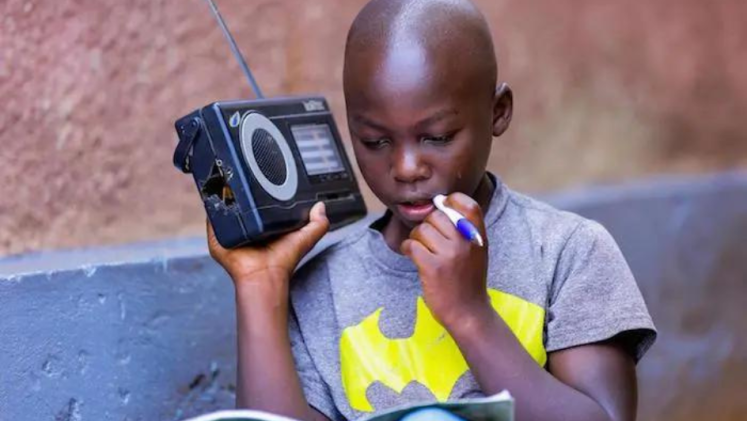One of the most significant closures during the COVID-19 health crisis is that of our school systems and universities. By 24 April 2020, education institutions in approximately 180 countries were closed, affecting 85 percent of the world's student population and causing nearly 1.5 billion students to stay out of the classroom. On the tertiary and higher education level, approximately 220 million college students (99% worldwide) have been out of school, causing several significant interruptions in coursework deliverability and research operations. And now that the new semester is starting, many countries are forced to decide between virtual and in-person classes. No matter what the final decision is, students, families, schools and communities are faced with limitations and difficulties during the pandemic.
The risk of COVID-19 transmissions rise with in-person classes, with the prospects of another wave looming. On the other hand, when schools close, students have limited access to university facilities, such as libraries, computer labs and student health clinics, causing students to return home with limited resources. Previous incidents of instability have shown an accumulated learning loss. In line with this, COVID-19 imposes a regression on the achievements made towards the UN Sustainable Development Goal number four (SDG4), which promotes quality education.
Some education and research institutions have adapted quickly to the interruption by turning to online solutions. In particular, institutions with digitalization strategies and online resources have been able to take an agile approach. However, not all countries and universities are able to do this: Approximately 35% of the population in developing countries have access to the internet, versus 80% in advanced economies. This kind of digital divide is prominent in Africa; while it has seen a boom in broadband connectivity, it still has a long way to go to achieve full connectivity. Such factors make Africa an ideal place to develop and implement e-learning technologies.
As an institute with long-term experience with e-learning in African countries, UNU-EHS has gained an understanding of what it takes to deploy technology-enhanced learning and contribute towards bridging the digital divide in developing countries. Here are five facts on what it takes:
Combine e-learning tools and solutions with different modes of delivery
Since the current COVID-19 situation began, there has been a significant increase in the uptake of e-learning solutions, including tools and methods such as video conferencing, virtual tutoring, digital libraries and online learning software, causing a massive demand for online education connectivity. A mix-and-match of these tools with a variety of delivery methods, such as interactive e-learning courses, live and recorded lectures and collaborative documents for group work, can work well to provide a comprehensive learning experience.
Focus on low bandwidth learning management systems and e-courses accessible on a range of devices, particularly mobile phones, to minimize access barriers, enhance student participation and potentially improve students’ course completion rates
According to the 2018 Connecting Africa Through Broadband report, Africa’s regional broadband penetration, including 3G and 4G connections, is only 25%. The broadband penetration rate has made significant improvements; however, the lack of reliable broadband access slows progress towards the Education 2030 Agenda. According to the Mobile Learning Week, an initiative towards SDG 4, merely waiting for improved internet access will not help narrow the digital divide and offline learning platforms that allow teachers to track and monitor student progress is greatly needed.
Course instructors must be trained specially for remote teaching
While E-learning courses have long complemented research and learning in institutions of higher education, a successful remote-only learning experience depends on the instructors’ capacity and expertise in working with available software and familiarity with different models of remote learning as seen in the different experiences by the Learn4Dev Network. Experts in the field of e-Learning have suggested planning, designing and delivering a high-quality online course could take up to a year to develop. However, due to the abrupt school closures needed in response to the virus, educators were obligated to pivot toward on-line solutions without any or limited training on online teaching deliverability. Some institutions became aware of the problem and offered “on-the-fly” in-house, on-line training to their educators. Organizations such as the World Bank and UNESCO have compiled a list of several distance learning resources and training programs to strengthen the capacities of educators, students, and schools in distance learning objectives. Available resources provided range from learning management systems, tools for teachers to create digital learning content, massive on-line course (MOOC) platforms, and even support for mental health and psychosocial guidance during the COVID-19 outbreak.
Access to a strong, reliable internet connection still presents a critical challenge for students in several developing countries
According to The World Bank, nearly two-thirds of the African population is still without broadband connectivity. An even wider gap is seen in internet connectivity. In 2019, UNCTAD estimated that in least developed countries (LDCs), only one in five people use the internet, compared to four out of five people in developed countries. Sub-Saharan Africa faces some of the most difficult challenges, with nearly half of the schools in the region without electricity, internet and computers, according to the 2019 SDG progress report. To tackle the digital divide and circumvent this challenge, combinations of transmission tools, e.g., USBs, CDs and communication protocols such as USSD, can provide supplementary models for learning.
Learning is here to stay
Regardless of the complex situation faced by universities in adapting to the new demands, there is no turning back. E-learning is here to stay, with or without COVID-19, and it is crucial to address the digital divide now. Beyond responding to COVID-19, educational institutes need to focus on how they can capitalize on e-learning solutions to support learning everywhere.

